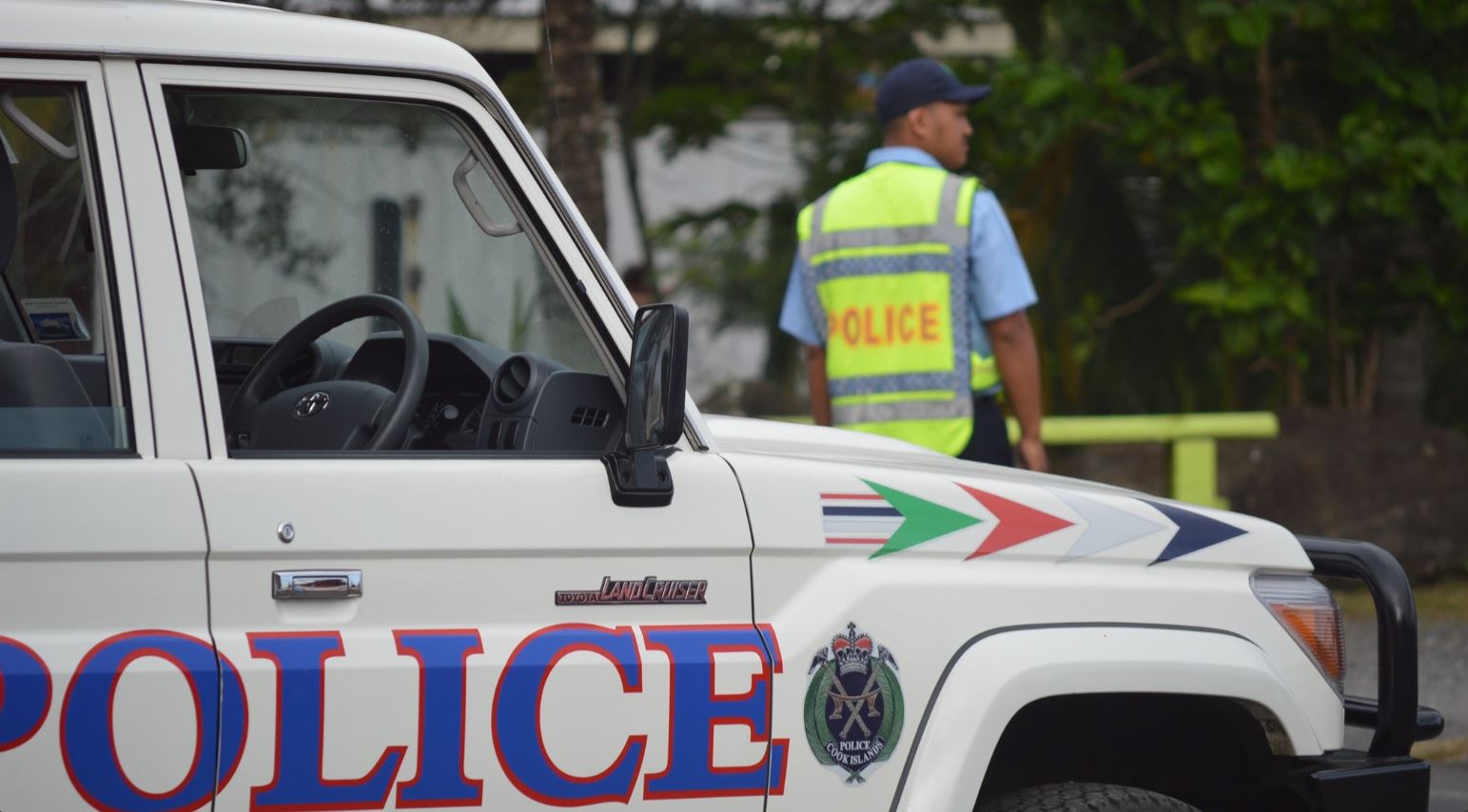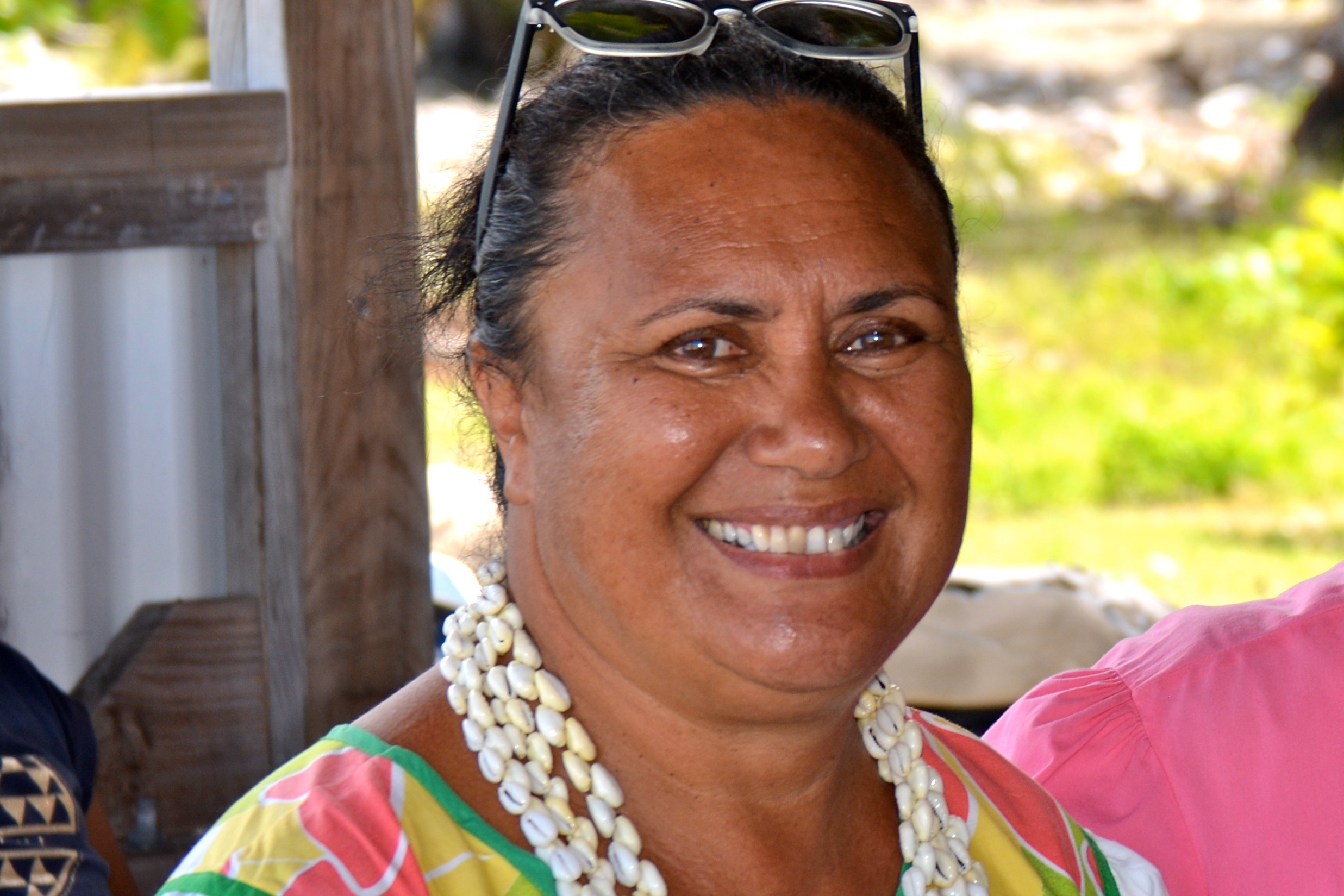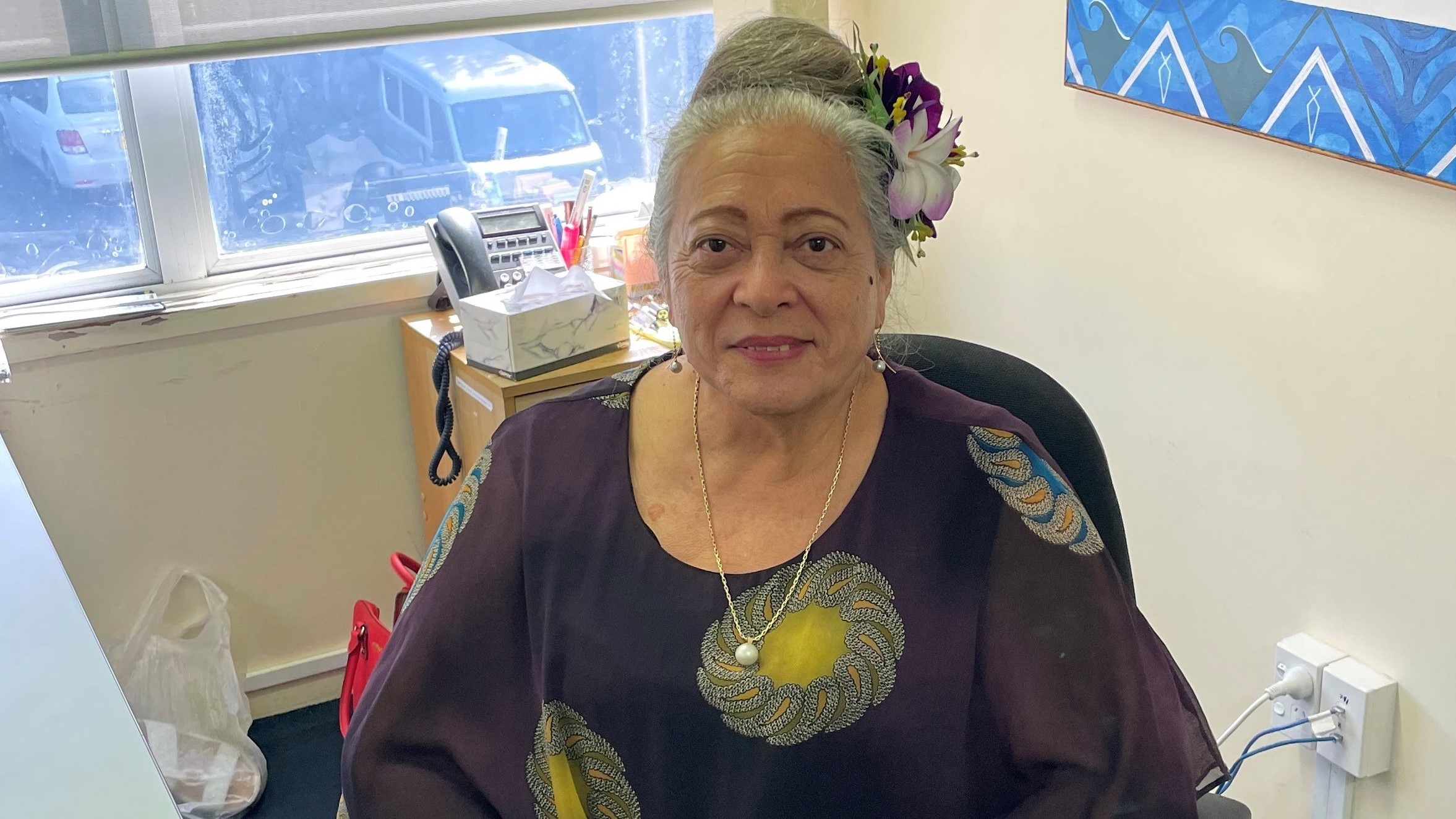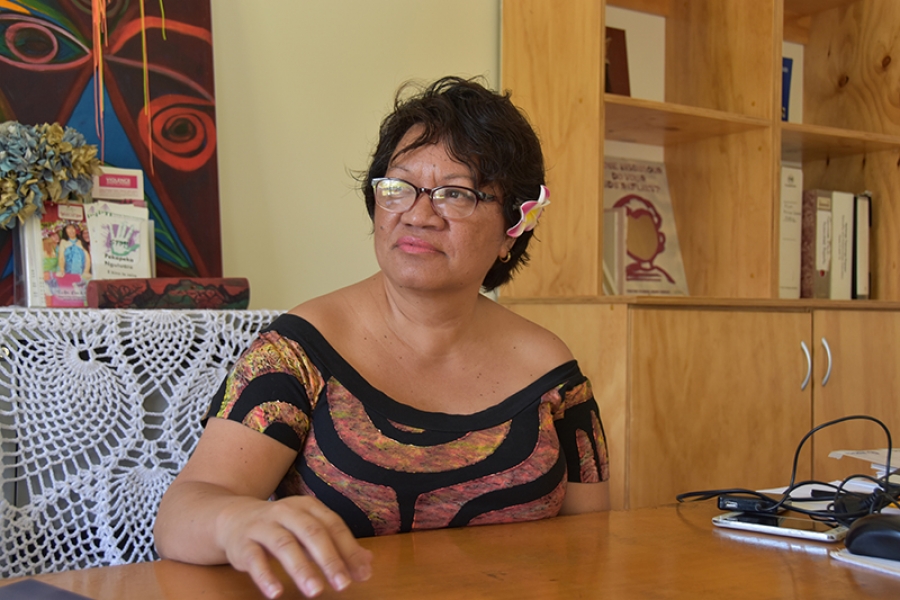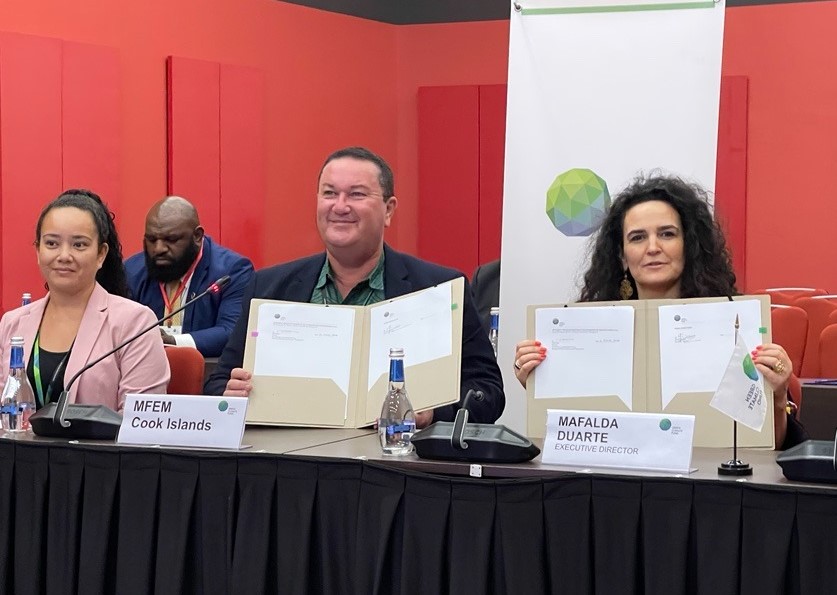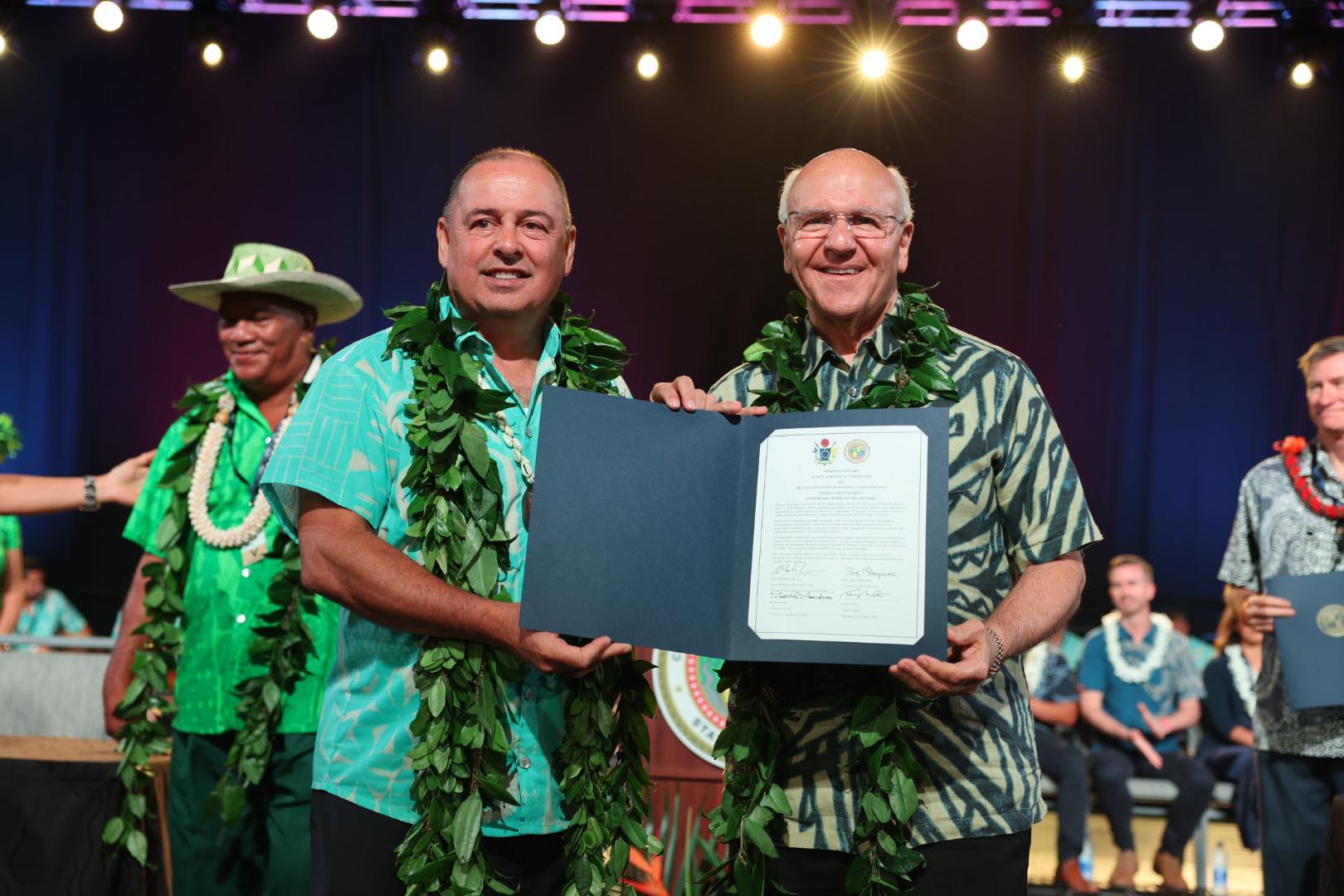Cook Islands and the British Commonwealth membership
Saturday 19 November 2022 | Written by Supplied | Published in Features, In Depth
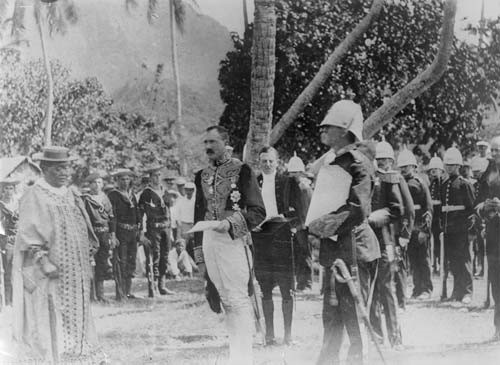
Rarotonga 9 October 1900: Annexation to Great Britain: Makea Takau Ariki accepts British Annexation for Rarotonga, Atiu, Mitiaro and Mauke from the New Zealand Governor General Lord Ranfurly. In attendance wearing a topee is the future Resident Commissioner Lieutenant-Colonel Walter E. Gudgeon. At this time, Makea Takau Ariki and others on Rarotonga were not aware that this Annexation Proclamation to Great Britain was just a “short-term” measure that would later be followed by a “transfer of annexation” from Great Britain to the Government of New Zealand eight months later on 11 June 1901. 22111833
Before the Cook Islands considers submitting an application to become a member of the United Nations, we should first consider submitting an application to become a Full Member of the British Commonwealth, writes historian Howard Henry.
In one capacity or another, the Cook Islands has been a part of the British Empire/Commonwealth for more than 120 years. And yet, as of today, the Cook Islands is still not recognised, or accepted as being, a Full Member of the British Commonwealth of Nations.
A check on any of the British Commonwealth Membership websites will clearly show that the Cook Islands are not included.
There are currently 56 Members within the British Commonwealth.
But the Cook Islands is not one of them.
The time is now right for the Cook Islands to “stand up” and submit an application to become a full member of this organisation.
The first island, of the present day Cook Islands, to be annexed by Great Britain was Penrhyn.
This happened on 22 March 1888.
In the weeks that followed, several other islands in the present-day Northern Group were also annexed by Great Britain.
But nothing came of these various annexations. They were all simply ignored and forgotten by the Government of Great Britain in the years that soon followed. This was because these various islands were looked upon as being of no economic or strategic value to the British domestic economy. So, it was pointless for the British Government to have any annexation relationship with any of these islands.
As a result of the apparent French Colonial threat spreading west from Tahiti, the British Government then placed a Protectorate status over those islands, which up until then, were known as the Hervey Islands. Rarotonga was the first island to be declared a British Protectorate. And this happened on 27 September 1888.
In the weeks that followed, other islands in the present-day Southern group, were also declared a British Protectorate.
As a result of placing a British Protectorate status over the then Hervey Islands, the British Government then changed the name of these various islands. They called them the Cook Islands, in recognition of the British explorer Captain James Cook.
These islands being the present-day Southern Group only. Those islands in the northern group, along with Palmerston, were not part of the Cook Islands at this time.
In the years leading up to 1901, New Zealand was a self-governing colony of Great Britain. It was not an independent nation in its own right. And so, the New Zealand Government had no authority to annex any islands in the South Pacific.
For several decades previous, successive New Zealand governments had persistently requested for the British Government to annex the Hervey/Cook Islands … and to then hand these islands over to the New Zealand Government for colonial administration.
During this period of time, successive governments in New Zealand were almost “desperate” to acquire their own colony, or colonies, in the South Pacific. France, Germany and Great Britain itself, had all annexed and taken colonial control of various groups of islands in the region.
And successive New Zealand governments wanted to be a colonial administrator, with their own dependent territory, or territories … just like them.
But they could not achieve this on their own. For New Zealand to take colonial control of any group of South Seas islands, those islands first had to be annexed by Great Britain. But as the years rolled into the 1890s, the British Government consistently declined New Zealand’s request for colonial territory.
As the later years of the 1890s unfolded, the British Government had a change of heart.
And so the New Zealand Government was told to pass the appropriate legislation through their Parliament in Wellington that would allow them to acquire their own colonial territory in the South Pacific. This territory being the Cook Islands.
Under the Premiership of Richard John Seddon, that legislation was passed through the New Zealand Parliament.
Subsequent to that, the New Zealand Governor General Lord Ranfurly, travelled by warship to Rarotonga and declared that island, as well as Atiu, Mitiaro and Mauke, to be annexed to Great Britain on 9 October 1900. In the days that followed, Lord Ranfurly visited both Mangaia and Aitutaki where he also announced their annexation to Great Britain. Lord Ranfurly also announced that each island of the present-day Northern Group were also annexed to Great Britain as well. However, Lord Ranfurly never bothered to visit any of these islands to confirm his annexation proclamation’s.
With his “annexation mission” now complete, Lord Ranfurly then returned to Wellington.
It was time for the next step in the “Cook Islands Colonial Process” to begin. This step having already been decided upon by both the governments of Great Britain and New Zealand, without any consultation or discussion with any of the people of Rarotonga, or any of those living on the outer islands.
At a small function in Wellington on 11 June 1901, the Governor General of New Zealand formally withdrew all the various British annexation proclamation’s he had previously placed on each of the islands within the Cook Islands.
With the withdrawal of all the British annexation proclamation’s, the New Zealand Government legislation to take colonial control of the Cook Islands then came into effect. And so, the Cook Islands then became a dependent territory of New Zealand.
Back on Rarotonga, and the other islands in the group, there was no knowledge of what had happened in Wellington.
Everyone was under the impression they had been annexed to Queen Victoria and to Great Britain … and so that was it!
Lord Ranfurly, and those travelling with him during his voyage of October 1900, never told anyone about what had been arranged between the Governments of Great Britain and New Zealand regarding Cook Islands annexation to New Zealand. So, while people on the various islands were happy to be told they had been annexed to Queen Victoria, they were never told that this was just a “short-term” measure that would be followed by a “transfer of annexation” from Great Britain to the Government of New Zealand eight months later, on 11 June 1901.
It was not until July 1901, that Lieutenant-Colonel Walter E. Gudgeon returned to Rarotonga. He then announced that he was no longer the British Resident, but rather, he was now the Resident Commissioner of the Cook Islands. He made it known public that Great Britain had withdrawn all of Lord Ranfurly’s annexation proclamation’s, and that a New Zealand law had been passed which said that the Cook Islands were now a dependent territory of New Zealand.
This meant that the Government of New Zealand was now the Government of the Cook Islands.
And as Resident Commissioner of the Cook Islands, Lieutenant-Colonel Walter E. Gudgeon was the New Zealand Government representative in these islands.
And so Lieutenant-Colonel Walter E. Gudgeon … he was now the boss.
The Cook Islands colonial period under New Zealand went on for another 64 years until the country gained Self-Government on 4 August 1965.
The formation of the British Commonwealth of Nations dates back to the Statute of Westminster Act. This legislation was passed by the British Parliament on 11 December 1931.
In the years that followed, there have been various amendments and updates in regard to British Commonwealth Membership and the ways various countries can apply to join this organisation.
The most recent review was undertaken at the Commonwealth Heads of Government Meeting in Uganda in November 2007. This conference agreed to a basic core criteria for Membership and how this new membership of any country can be achieved.
For a country that wishes to join the British Commonwealth of Nations organisation, the following four steps will apply once the country concerned has submitted a formal expression of interest to the Secretary-General at the Commonwealth Secretariat. The following four steps will then take place:
- An informal assessment will be undertaken by the Secretary-General following an expression of interest by an aspirant country.
- Consultation by the Secretary-General will be made with other member states.
- An invitation will then be extended to the interested country concerned to make a formal application.
- Included in that formal application, there needs to be evidence that the country concerned has a functioning democratic process and there is popular support in that country for joining the British Commonwealth.
The procedure also sets out that the application would then be considered by Heads of Government at the next Commonwealth Heads of Government Meeting. If that Conference reaches consensus on accepting this particular application, then that country concerned would then join the British Commonwealth and be invited to attend subsequent meetings and fully participate in all future British Commonwealth activities.
The last Commonwealth Heads of Government Meeting was held in Rwanda during June 2022. The next Commonwealth Heads of Government Meeting is scheduled to be held in Samoa in mid-2024.
If the people of the Cook Islands have a genuine desire to apply for Full Membership of the British Commonwealth of Nations, then it is to the scheduled Heads of Government Meeting in Samoa 2024 that our attention should now be directed.
Should the decision be taken by Government, that they wish to proceed and submit an “Expression of Interest” with the Secretary-General to join the British Commonwealth, then it may be appropriate to seek three other “Expressions of support” as being part of Government’s initial correspondence with Secretary-General.
These three “Expressions of support” could come from:
- The Parliament of the Cook Islands. This would come as a result of a motion being tabled in Parliament supporting this initiative. Discussion and debate would then take place and all members of Parliament would have been given the opportunity to contribute and express their views.
- The House of Ariki. The traditional leaders of the Cook Islands need to also be consulted. And for them to make a decision as to whether they support the Cook Islands Government submitting an application to become a Full Member of the British Commonwealth of Nations.
- The Cook Islands Religious Advisory Council. The leaders from each of the main religious denominations in the Cook Islands, should also have the opportunity to express their views as to whether the Cook Islands should submit an application to become a Full Member of the British Commonwealth.
It could be argued that the basic reason the Cook Islands was not a Full Member of the British Commonwealth is simply because no government in the past has ever bothered to apply for Full Membership.
Successive governments had consistently taken the view “by mistake”, that the Cook Islands did have Full Membership.
When in fact the Cook Islands did not.
The time is now right for the Cook Islands to “step-up” and seek Full Membership of the British Commonwealth.
After more than 120 years of being British subjects, it is now time for the Cook Islands to stand “shoulder-to-shoulder” with all the other 56 countries world-wide who are Full Members of the British Commonwealth of Nations.
Samoa, mid-2024, that is when all of this can be achieved.
Howard Henry is the eldest grandson of the late Albert Henry, the first premier of the Cook Islands. Howard has authored a number of books including “Christianity created a Nation” – a book of many stories concerning a whole series of events following the arrival of the Gospel to Aitutaki on 26 October 1821.



















